“SUPPORTING VICTORY SINCE 1775”
Dr. Isaac W. Hampton II, Quartermaster Historian
with contributions from former historians of the
Quartermaster School,
Dr. Leo P. Hirrel
and Dr. Steven E. Anders
U.S. Army Quartermaster School
Fort Lee, VA 23801
2018
Editorial edits for currency by
Major General Barry Bates, USA (Ret)
Origins
On June 16, 1775, just two days after sanctioning the formation of an Army, the Continental Congress authorized the position of Quartermaster General for the new Army. Shortly afterwards it also authorized a Commissary General. As the new Soldiers were gathering outside of Boston, they required food, shelter, clothing, and all of the necessities for sustaining an Army in the field. Two months later, George Washington appointed Thomas Mifflin to be the first Quartermaster General.
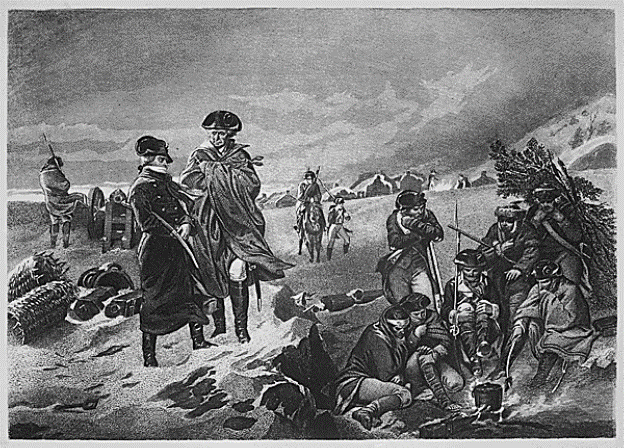
Despite their recognition of the need for a Quartermaster General, Congress and the nation were poorly prepared for the task of supporting the Continental Army.
Without a viable national government the Army depended upon contributions from the states, which were uneven at best. Even when food and supplies were available the Quartermasters often lacked the means to transport the goods to the troops. The miserable winter at Valley Forge is perhaps the best remembered example of hardships suffered by the Revolutionary War Soldiers, but other winters were comparably bad.
Nevertheless, Thomas Mifflin, and later Nathanael Greene, created some semblance of order within the supply system. By establishing a system of depots, or advance supply points, they supported the Army for most military operations. The French alliance further eased shortages of money and supplies. Following the Revolution, the position of Quartermaster General was considered to be appropriate only for wartime, and it was allowed to lapse. At that time Quartermasters were authorized for specific Indian expeditions. Later a civilian Quartermaster General was employed during the Adams’ administration only to have the position replaced by purchasing agents during the Jefferson administration. Shortly before the War of 1812, Congress re-instituted the position of Quartermaster General as a military rank, with military subordinates. How-ever, these changes came too late to allow for a satisfactory supply system. The logistical problems of this war convinced the government of the need for a permanent Quartermaster Department.
Quartermaster Department 1818-1912
In 1818, Brigadier General Thomas Jesup became Quartermaster General. During his long tenure he established enduring policies and practices that earned him the moniker as “Father of the Corps.” Jesup envisioned the role of the Quartermaster as a military position rather than a business position in order to ensure priority for support to the operations. Jesup also insisted upon strict accountability for all transactions. Officers and NCOs were assigned to the Quartermaster Department for extended periods of time, often for the duration of their careers. Unlike today, the Quartermasters of that era relied upon civilian labor or detailed Soldiers to perform the actual labor.
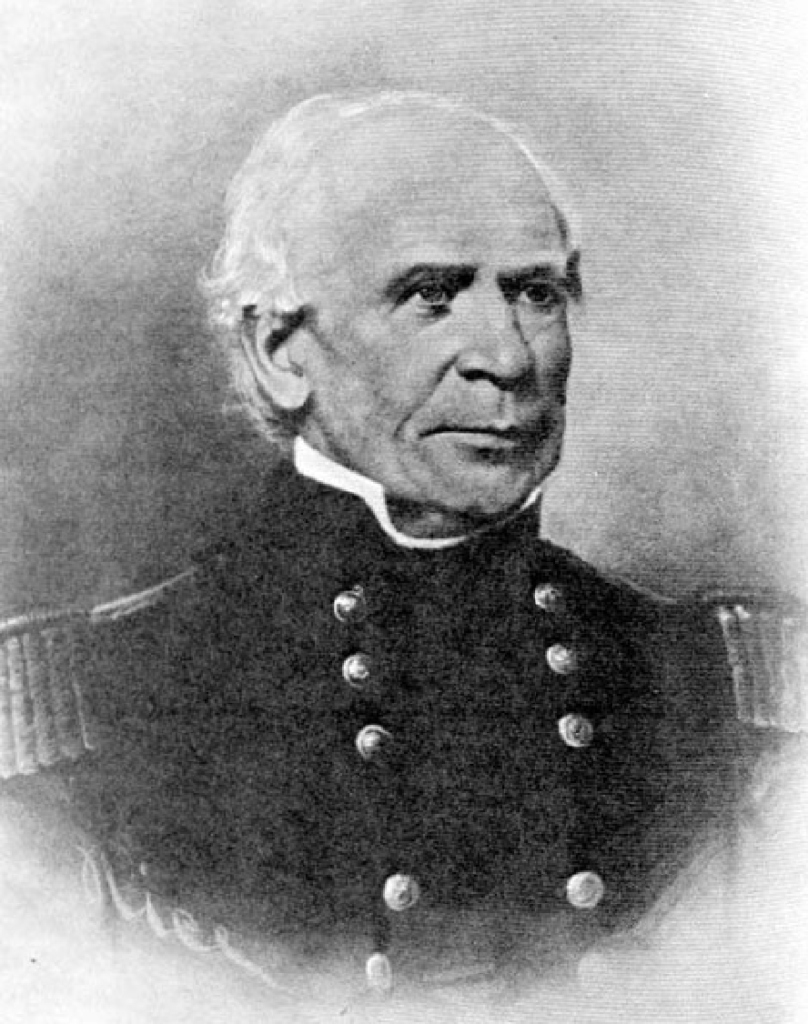
‘Father of the Quartermaster Corps’
Finding teamsters to drive the wagons proved to be one of the greatest challenges in keeping the widely dispersed Army properly supplied. The Quartermaster Department continued to manage a wide variety of commodities ranging from getting food for the horses, procurement of uniforms, construction of quarters (where feasible), plus tents and field equipment. Various Indian campaigns, including the Seminole Wars, kept the Quartermaster Department fully engaged.
From 1846 to 1848 the Mexican War provided the U.S. Army’s first experience at major overseas campaigning. The Quartermaster Department kept the Army supplied in this challenging environment, often relying upon local agents to purchase supplies.
Massive mobilizations created by the Civil War challenged the Army’s logistical systems in ways not previously imagined. Unprepared for the hundreds of thousands of troops mustered into the Union Army, the system could not provide sufficient supplies during the first few months of the war. In their haste to meet the demands of the Army, Quartermasters allowed bad practices including price gouging, defective merchandise, and outright fraud. Initially, tactical logistics also suffered from problems caused by inexperience and sudden growth. Over time the supply systems improved. As the new Quartermaster General, Montgomery Meigs, instituted discipline into the system. Commanders learned how to plan their operations within the logistical constraints. The scale of the logistical operations was massive, especially for personnel accustomed to a small, stable Army, but the logisticians learned to adapt. They used forward depots to support operations and employed new technologies including railroads and steam-boats. During the Petersburg Campaign, the Union depot at City Point became one of the busiest ports in the world.
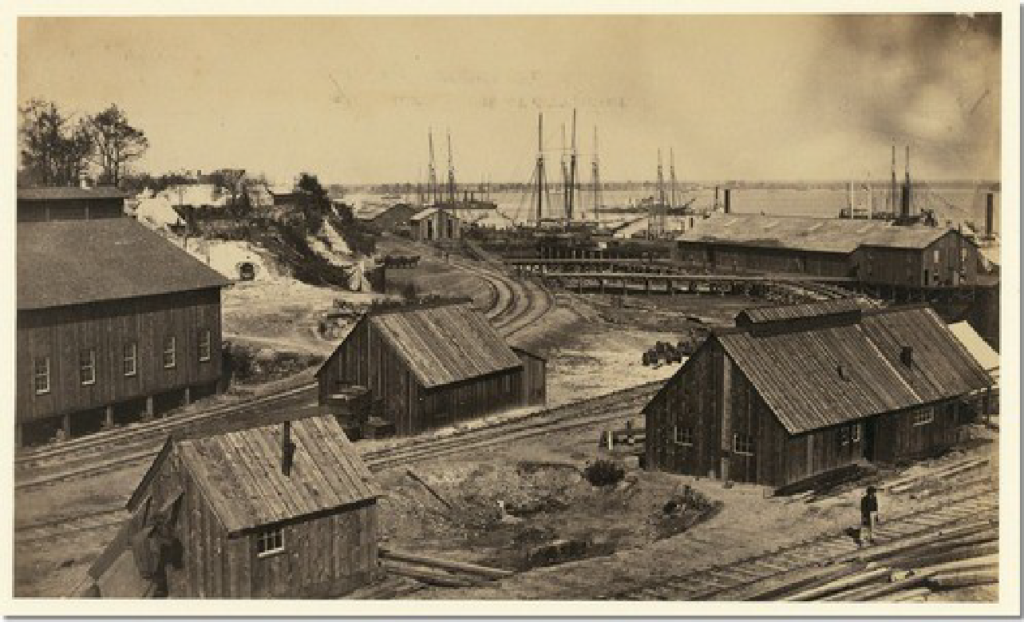
For the first time the Army cared for the remains of the casualties in a systematic manner. The War Department initiated a network of national cemeteries under the supervision of the Quartermaster General to provide an honorable burial for Soldiers who died serving their country. This marked the beginning of the mortuary affairs mission, which continues as a primary mission today.
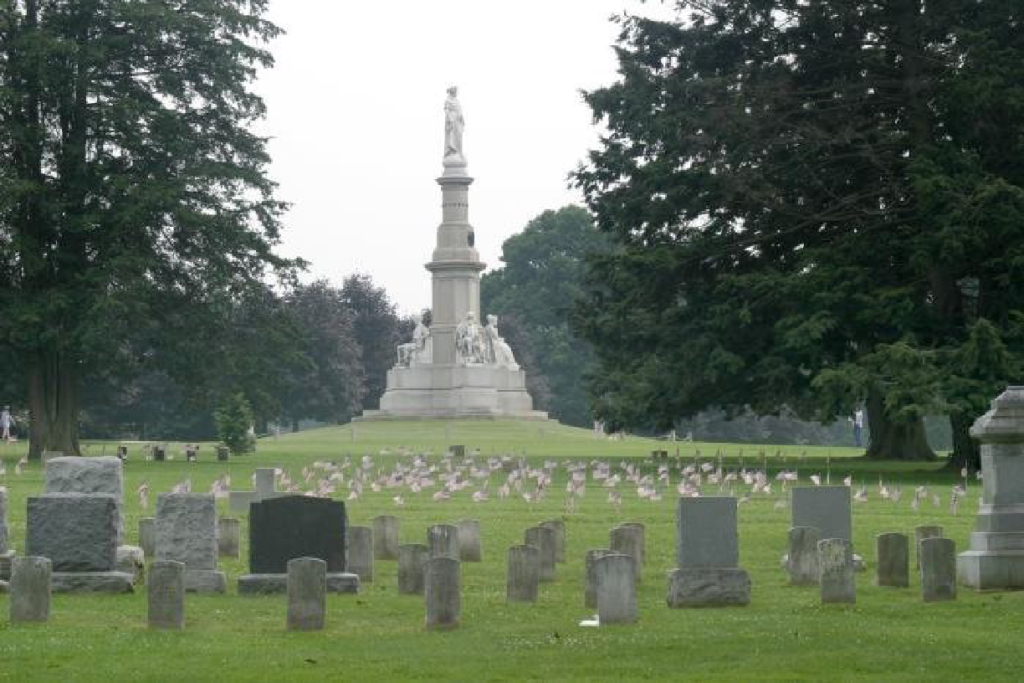
Following the Civil War the Army returned to its former duties of enforcing the peace within the trans-Mississippi West. This work consisted primarily of extended campaigns against Native Americans in areas ranging from the plains of the Dakota territory to the mountains of Arizona. The Quartermaster Department arranged for the supply support through-out these dispersed campaigns thus providing a vital advantage to the Army.
Unfortunately, the experience of supporting major military operations was forgotten while the Army was operating in the West. The lapse in logistical expertise proved to be a serious deficiency once the United States entered war with Spain in 1898. Once again, purchasing practices created a climate for waste, fraud, and abuse. The temporary camps created to hold the rapidly expanding Army were so poorly designed that Soldiers died from disease in shocking numbers.
For the U.S. Army this was the first overseas deployment since the Mexican War; but as of this time the Quartermaster Department had no organized military units. The support structure was still supported by contracted labor, which did not work well outside the United States. The Army had no knowledge of how to load or unload the ships used for the invasion of Cuba. Resupply operations in Cuba were plagued with difficulties, especially for medical supplies. Spain surrendered be-fore the logistical deficiencies created even more problems.
Quartermaster Corps 1912-1962
Learning from its bitter experience in the Spanish American War, the Army instituted a number of reforms that encompassed almost all aspects of its organization. This included the creation of an Army Staff and establishing a system for professional education. The Army was becoming a professional force and the Quartermaster Corps was changing too.
Beginning in 1912 the Quartermaster Department became the Quartermaster Corps, with a new way of operating. For the first time the Army recognized that trained Soldiers were required to support military operations, especially in combat or overseas situations. It created entire units of Quartermaster Soldiers performing support activities.
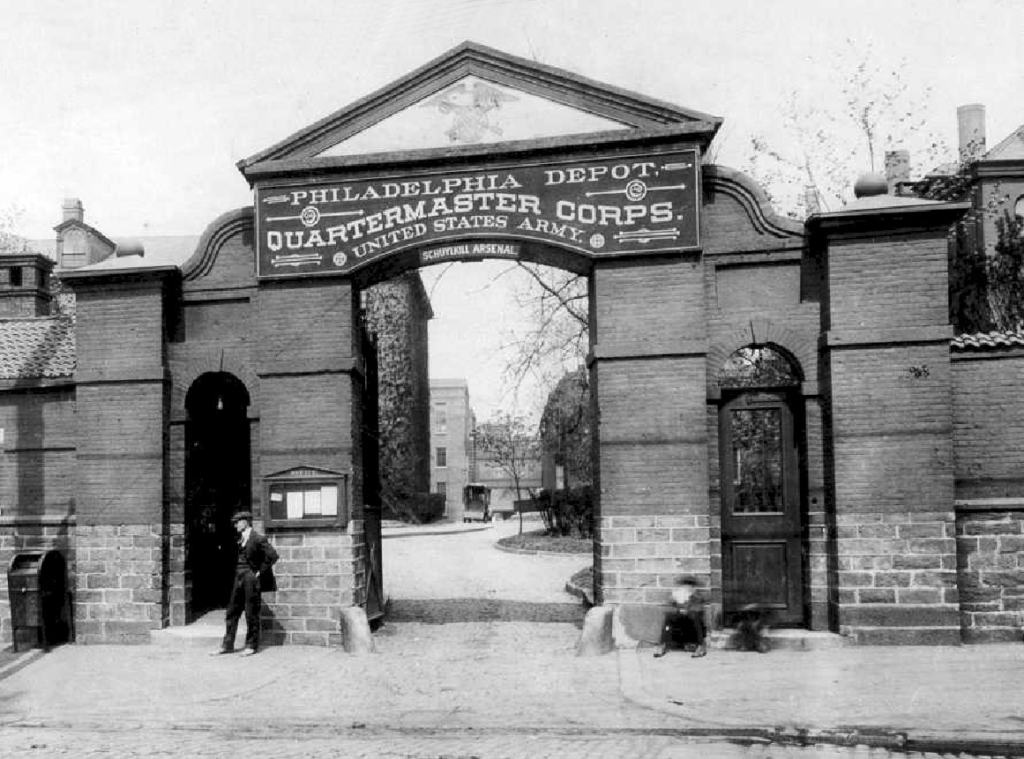
Philadelphia
First home of the Quartermaster School (1920)
Sustaining the Army became an integral military function. Other changes came at the same time. The Commissary and Paymaster Departments were consolidated into the Quartermaster Corps (although the Paymaster be-came Finance in 1920). A school in Philadelphia trained Soldiers in their duties. Along with other supporting branches the Quartermaster Corps came to be called one of the “technical services.”
When America entered World War I, these reforms proved their value. Although the mobilization was not perfect, problems were far fewer than the Spanish American War, especially in view of the size of this war. The new organization proved more adept at supporting the Army overseas.
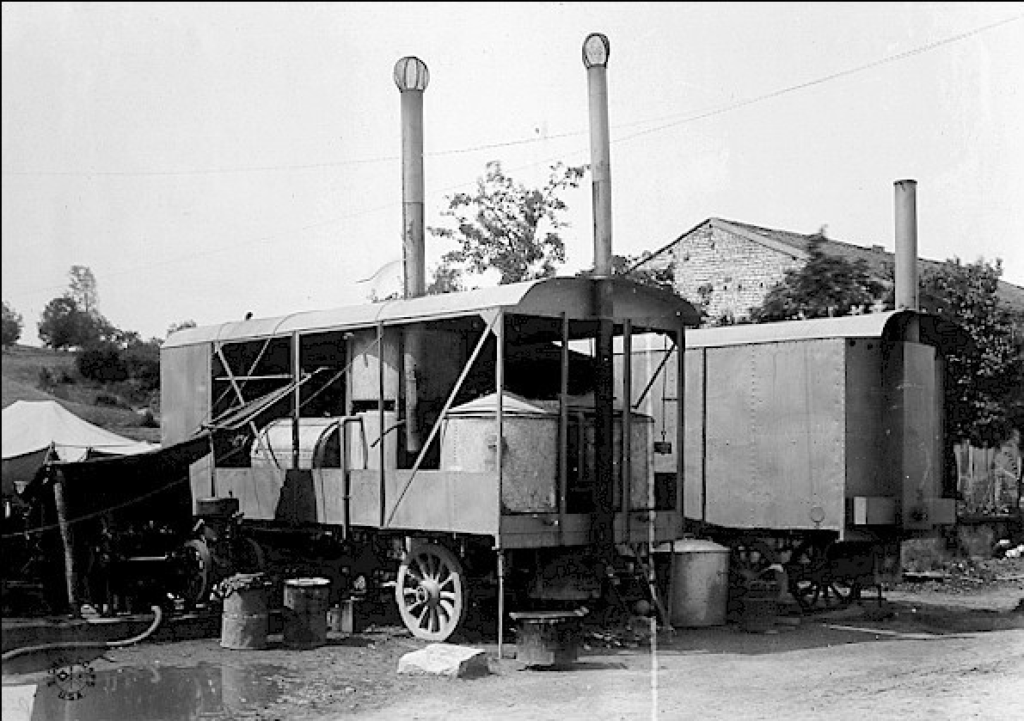
Quartermasters established a support structure in France that included port operations, advanced depots, and salvage depots. This conflict also marked the beginning of modern war with the introduction of petroleum and repair parts to the logisticians’ load. Recognizing that personal cleanliness reduced the spread of disease, the Quartermasters introduced laundry and bath operations, including lice removal.
World War II was unlike all previous conflicts in the size, geographic dispersion, and modern nature of the war. The Army expanded to over eight million Soldiers by 1945, and all of them required support from the Quartermaster Corps. The Quartermaster General supervised the initial construction for the war effort including training camps and ammunition production facilities. Within the United States the Quartermaster Corps procured clothing and equipment for climates ranging from arctic to tropical. It also managed the distribution of supplies. Until the Transportation Corps became a separate organization in 1942, the Quartermaster General supervised movements of personnel and materiel.
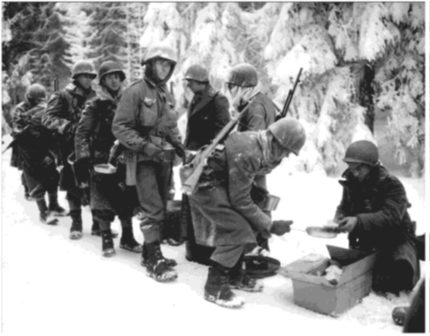
Overseas, Army logisticians learned to support large armies in a swiftly moving offensive. The rapid advances in Europe in 1944 stretched the ability of the supply lines to keep up with the offensive. Eventually, shortages of petroleum produced a pause in the attack. Winter weather required distribution of heavy uniforms during offensive operations. In the Pacific, logistical support depended upon delivering the correct quantities of supplies to units on islands scattered throughout the various areas of operations.
Modern warfare produced its own set of challenges during World War II, and military logisticians responded. Petroleum and repair parts first appeared as logistical issues in World War I, but this time they were critical to operational success. Because the Air Corps was still part of the Army, the Quartermaster Corps supplied the specialized needs for air crews. Aviation also opened the possibilities for airborne operations and aerial delivery of supplies. In 1950, rigging and aerial delivery be-came another mission for the Quartermaster Corps. Hopes for an enduring peace following World War II were illusory, as the United States entered into a protracted period of armed tensions with the Communist Bloc known as the Cold War. The Army and the Quartermaster Corps adapted to the new requirements. No longer able to rely on time for mobilization, the Army needed to be prepared for war on short notice, including materiel readiness, forward deployed units, and forward depots in case of war. Quartermaster Soldiers performed the work within almost all levels of Army organizations.
On June 25,1950, North Korea invaded South Korea, and the U.S. Army led the international effort to halt communist aggression. Once again the Quartermaster Corps entered the fighting. By locating and delivering excess World War II supplies, logisticians overcame the problems of initial supply shortages.
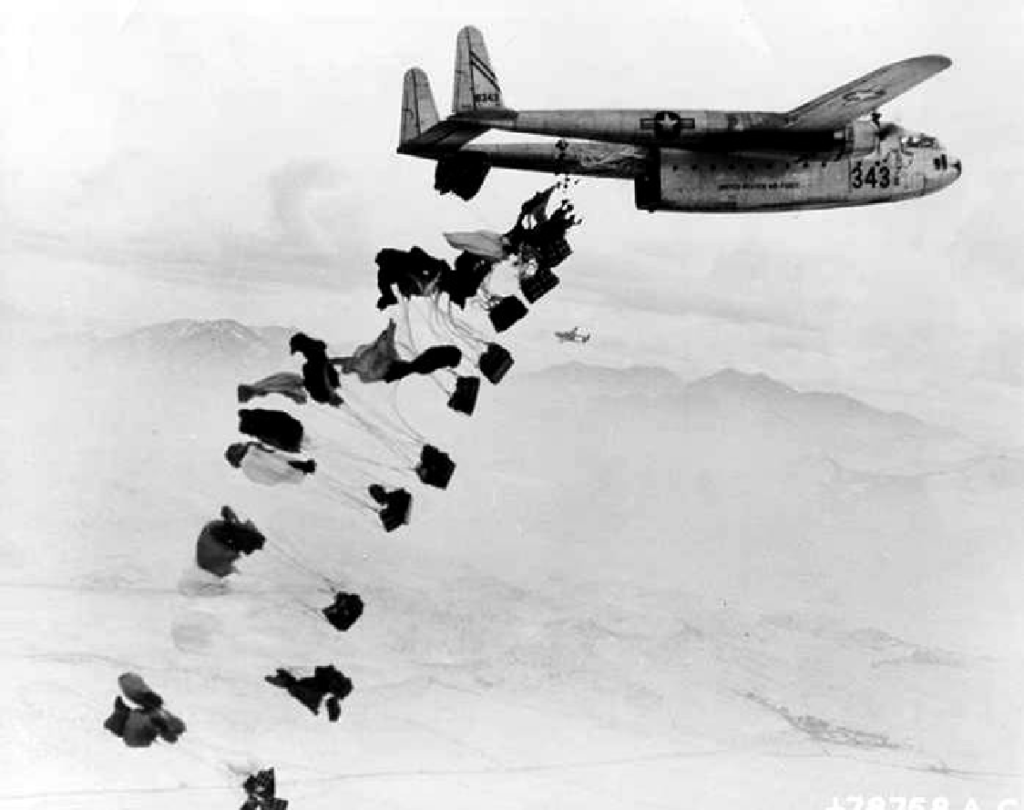
Aerial delivery officially became part of the Quartermaster mission. Rigger units proved their value in delivering supplies when other transportation was not available, including air delivery of bridging equipment that enabled the Marines to evacuate from the Chosin Reservoir. During the conflict the Quartermaster Corps began returning remains of fallen Soldiers to their families during the conflict, rather than waiting for the end of hostilities.
Present times 1962 – forward
In 1962 another reorganization significantly changed the way that the Quartermaster Corps functioned. Until this time the Quartermaster General, like the other chiefs of the technical services, exercised control over all Quartermaster activities from acquisition to distribution, along with personnel oversight. Now a new organization, designated as Army Materiel Command, assumed responsibility for the acquisition and materiel management functions of all the technical services. Furthermore, the Quartermaster General position was temporarily abolished until the mid-1980s. This change marked a paradigm shift away from stove-piped logistical functions and towards integrated logistical functions within the Army.
Nevertheless, Quartermaster remained as a career branch for Soldiers of all grades. Quarter-master Soldiers continued to provide supplies and services, in coordination with Army logisticians from the other branches. The Quartermaster School, now at Ft. Lee, Virginia, remained the centerpiece for branch activities. In 1981, the commandant of the Quartermaster School assumed the reinstituted title of Quartermaster General. Also, in 1981 the Quartermaster school took over water purification, storage, and distribution from the Army Engineers. The activation of the Quarter-master regimental affiliation in 1986 gave further recognition of the enduring nature and rich history of this branch.
Containing the growth of Communism remained the dominant military threat until 1989. American forces continued to maintain a deterrent in Europe and Northeast Asia, with the Quartermasters providing the logistics.
In Southeast Asia the Vietnam Conflict dominated American military activity for the late 1960s and early 1970s. Over time the logistical infrastructure developed to create one of the best supported military operations in the history of the Army. The static nature of the conflict, combined with short distances to ports, enabled the Army to construct an elaborate system of depots that supplied front line units. American troops seldom lacked supplies.
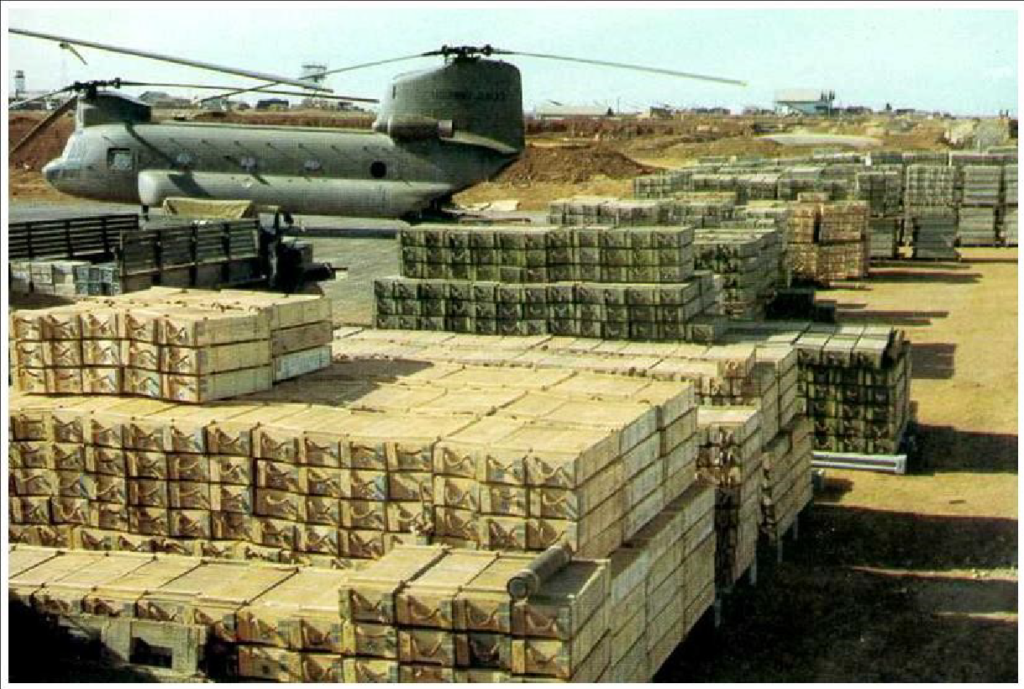
With the collapse of the Soviet Union in 1989 the Cold War came to an end; but military activities continued and even accelerated. Each new contingency operation presented its own logistical challenges and Quarter-master Soldiers supported each operation as part of the Army’s logistical team, often working with other services or other nations.
When Iraq unilaterally annexed Kuwait in August 1990, the United States led the coalition to liberate Kuwait. Movement of forces to this theater presented an enormous logistical challenge with the movement of XVIII Airborne Corps and VII Corps to Saudi Arabia along with the logistical infrastructure.
Supporting this conflict presented some unusual problems for Quartermaster units. The latest generation of vehicles consumed huge quantities of fuel. Total fuel consumption exceeded two billion gallons and required construction of new petroleum facilities in addition to the use of host nation facilities. The high temperatures and arid environment created unprecedented demands upon water purification units.
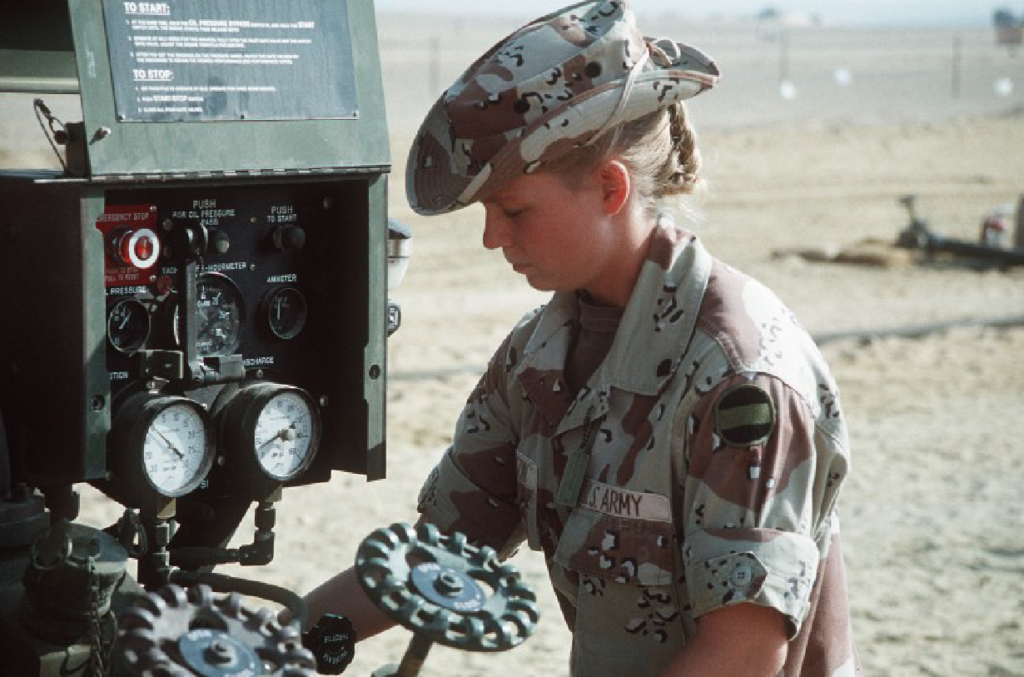
Desert Storm, 1991.
Tragically, a water purification unit suffered the highest proportion of casualties when a rocket struck members of the 14th Quartermaster Detachment (an Army Reserve unit) hours before the truce.
Throughout the 1990s American military intervention continued for reasons ranging from humanitarian assistance, to peacekeeping, to political interventions. Immediately after the fighting in Iraq ended, coalition forces delivered relief supplies to Kurdish refugees in the rugged mountains along the Iraqi-Turkish borders, relying heavily upon aerial delivery. Then peacekeeping within the Balkan nations, followed by the Kosovo War, again challenged the Quartermaster Soldiers to keep our forces properly supplied while minimizing the American footprint. Intervention in Haiti came with a logistical price, although support from contractors reduced the burden.
Even as the Quartermaster Corps supported a wide range of military operations, its leaders initiated improvements to the efficiency of logistical support. New means of information management and automated tracking of supplies offered the promise of precision logistics. Instead of maintaining large quantities of repair parts or other supplies, Americans henceforth would rely upon precise delivery of the required item on a timely basis. Other improvements in equipment and processes allowed for better support with fewer re-sources. Greater cooperation with other Army logistical branches, with other services, and with other nations further enhanced the efficiency of Quartermaster operations.
Into The 21st Century
The focus on all military operations changed on the morning of 11 September 2001, when terrorists used hijacked airliners as weapons against Ameri-ca, causing thousands to die in the World Trade Center, United Airlines Flight 93 in Pennsylvania, and the Pentagon. Immediately it became apparent Islamic extremists based in Afghanistan conducted this attack. The United States responded by leading the international effort to topple the Taliban government in Afghanistan.
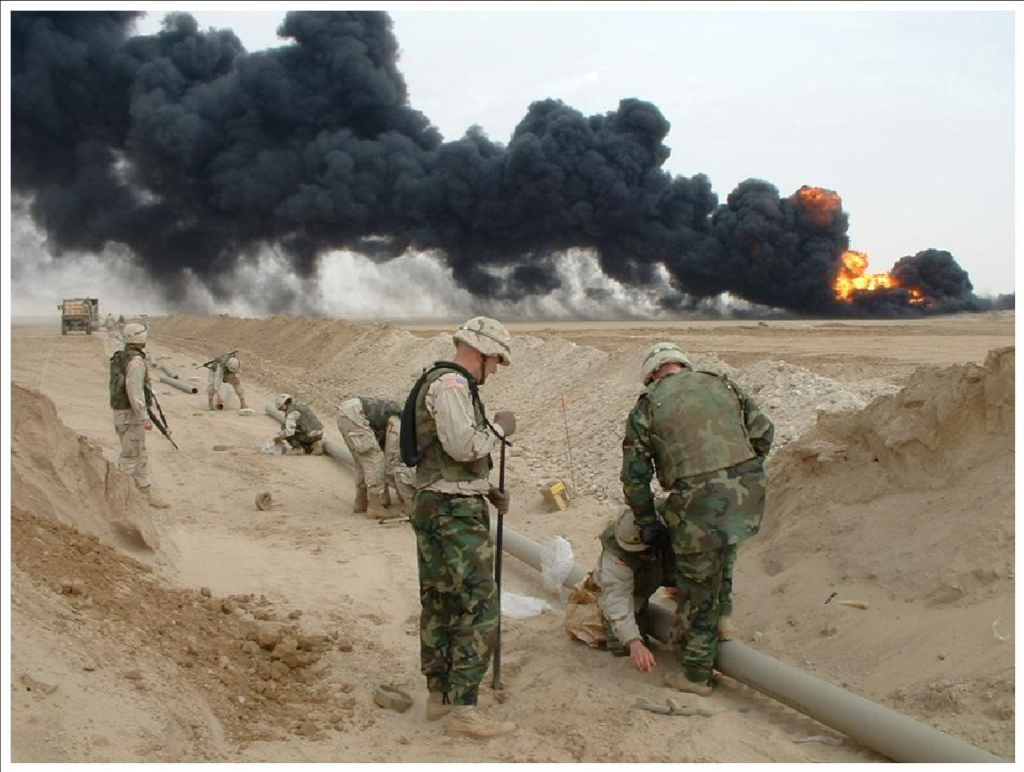
In March 2003 the United States led a coalition force to remove the Iraqi dictator Saddam Hus-sein. Early success in both operations was followed by prolonged insurgencies, which challenged all aspects of the coalitions’ operations, including the logistics. In Iraq, convoy operations and movement of supplies in the face of enemy attacks and explosive devices proved to be a constant danger, especially for isolated bases.
In Afghanistan the mountainous terrain, lack of infrastructure, and distance from ports presented even more formidable challenges. Soldiers developed innovative ways to reach isolated units even in the high altitudes, such as a low cost, disposable parachute that delivered supplies to small outposts.
Even as the Quartermaster Corps evolved during these prolonged conflicts, other changes were coming to all the logistical branches. Increasingly logistical units at battalion or higher levels consisted of Ordnance, Transportation, and Quartermaster units performing multiple logistical functions, and field grade officers needed to be competent in multiple logistical disciplines.
On November 27, 2007 the Army decided to create a Logistics Branch for field grade officers and senior captains. New officers within a sustainment career field still enter the service as Quartermaster, Ordnance or Transportation officers.
Upon completing the twenty week Combined Logistics Captains Career Course (LOG C3) they become members of the Logistics Branch. The change comes as part of a larger recognition of the growing interdependence of the logistical functions.
In January 2009, The Sustainment Center of Excellence Headquarters building replaced Mifflin Hall and became the new home for the Combined Arms Support Command (CASCOM), and Command Group Headquarters for the Quartermaster, Ordnance, and Transportation Corps.
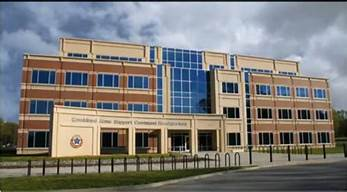
Fort Lee, VA
This new structure is over 218,000 square feet, houses all of the headquarters U.S. Army Logistics Corps, covers eleven acres, and sits on what was once Sergeant Seay Field. The modern design of the building is reflective of the ever-evolving mission of the Quartermaster Corps at home and abroad.
Forces of Nature
During the 2000s, the Quartermaster Corps supported several Humanitarian Disaster Response operations from the eastern states along the Atlantic Coast, the southern states in the Gulf of Mexico, to U.S. protectorates and partner nations in the Caribbean.
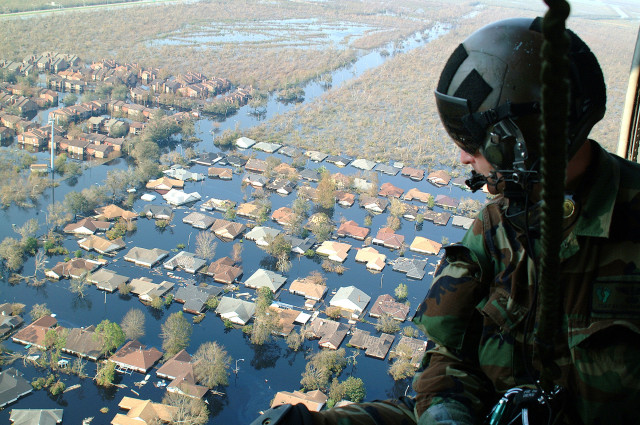
In 2005, Hurricane Katrina affected over 93,000 square miles of the U.S., created over $96 billion in property damage, destroyed an estimated 300,000 homes and killed approximately 1,800 people.
In response, Fort Lee’s 54th and 111th Mortuary Affairs companies deployed to New Orleans, Louisiana to support recovery efforts.
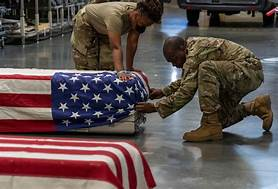
In fact, over the last 20 years Army Mortuary Affairs have deployed around the world to assist in such places as Bosnia, Somalia, Croatia, the Middle East, Oklahoma City, Hurricane Andrew, Hurricane Katrina and Operation Unified Response in Haiti (2010) to recover American citizens.
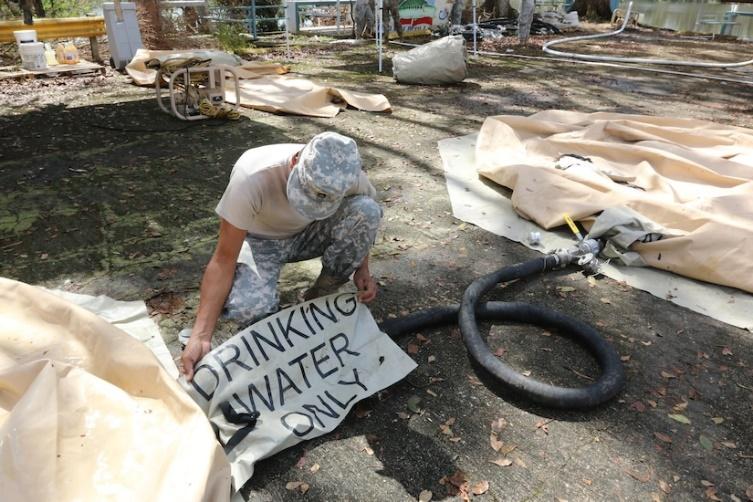
Since 2011, eight major hurricanes have hit the U.S. mainland and the Army played a role in the nation’s healing and recovery from these natural disasters.
For example, in 2012, Fort Lee’s 108th Quartermaster Company was a part of the Hurricane Sandy assistance effort to pump water out of flooded areas. In 2017, Soldiers of the 973rd Quartermaster Company deployed to Puerto Rico to purify water in Hurricane Maria relief operations.
Innovative Technological Advancements
The Army is keeping up with the rapid evolution of technology and its important application for modern force development. Autonomous driving trials were conducted with 10 autonomous trucks at Fort Bliss, TX in April 2019, with 60 more trucks programed for delivery to other Army posts for more unmanned driving trials. Driverless trucks will conserve manpower, reduce accidents, and remove soldiers from dangerous situations.
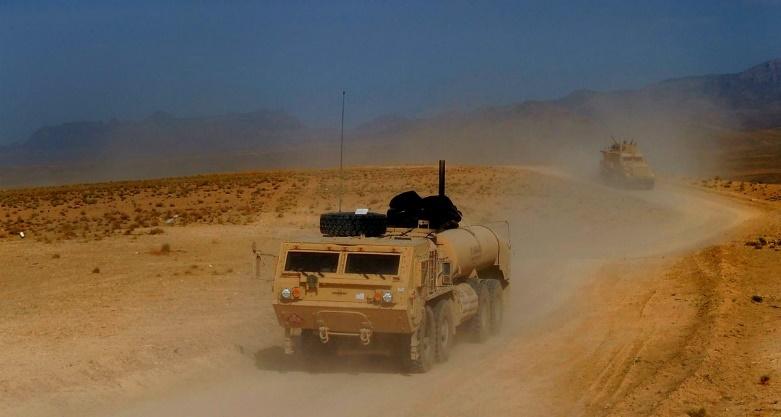
(Image credit: Staff Sgt. Kenneth Holston, US Air Force)
Aerial delivery drones are also being tested that can transport vital supplies to soldiers where traditional aerial distribution is not possible.
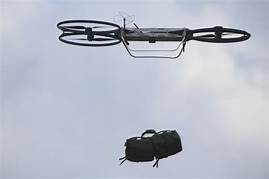
On March 16, 2017, Global Combat Support System–Army (GCSS-Army) Increment-1, moved to its permanent office facility on Fort Lee, Virginia. GCSS-A is a state-of-the-art, web-based, logistics and finance system based upon commercial best business practices and off-the-shelf (SAP) software. It will serve as an automated combat enabler for Soldiers. Integrated with De-partment of Defense financial systems, GCSS-A provides highly accurate cost management and financial visibility for tactical materiel and sustainment.
As the world enters the decade of the 2020’s, the wars in Afghanistan, Iraq, and other parts of the world have taught our Army that the face of battle and nature of war will remain unchanged, but the continuum of conflict must be understood in the current and future context. The Army will continue to evolve organizationally and become even more lethal to the nation’s enemies. A constant will be the necessity to support the warfighter and Quartermaster Soldiers will do the necessary work to provide, food, supplies, petroleum, mortuary operations, aerial delivery, laundry, showers, and other functions not even considered at the present.
Since June 1775, Quartermaster Soldiers have provided the logistical capabilities to enable success in combat and non-combat operations. No other branch of the service can begin to rival the Quartermaster Corps for its diversity of tasks and the many functions it provides the Army. Despite all the changes, the fundamental mission of supporting the individual combat soldier in the field has remained an imperative. The United States can rest assured that current and future Quartermaster Soldiers will live the Army Values and proudly uphold the Corps motto of “Supporting Victory.”
